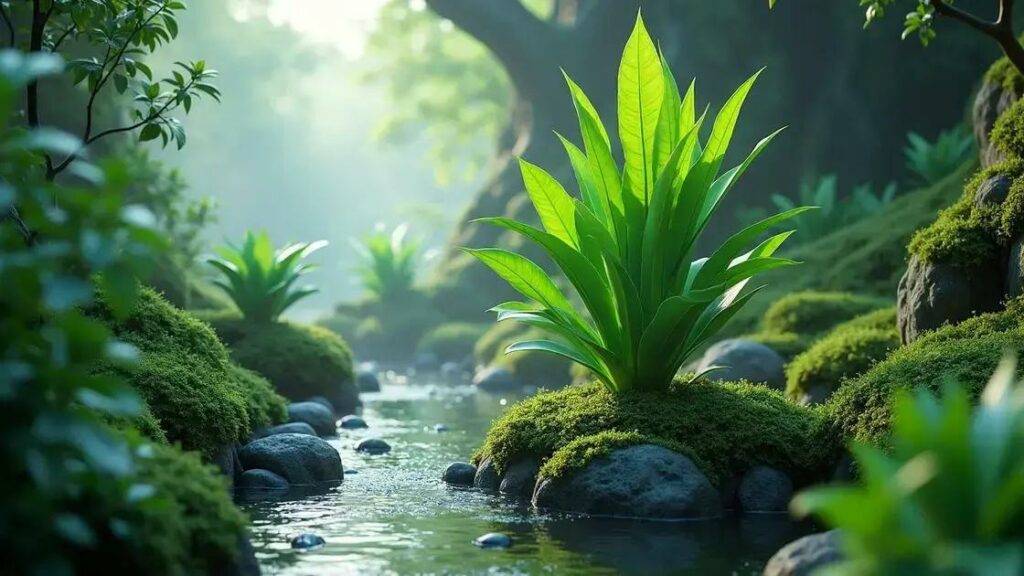How to take care jade plant might seem daunting, but with the right knowledge, it can be a delightful experience. These resilient plants, known for their beauty and adaptability, have specific needs that, when met, will help them flourish. Dive into the secrets of jade plant care and unlock the potential for a vibrant addition to your home.
Table of Contents
ToggleUnderstanding jade plant light requirements
Understanding jade plant light requirements is crucial for promoting healthy growth and maintaining the vibrant appearance of your jade plant. These resilient plants thrive best in bright, indirect sunlight, making it essential to know the specific light needs to ensure they flourish.
Optimal lighting conditions for jade plants
- Bright indirect light: Jade plants prefer a well-lit location, where the sunlight is filtered or diffused. Placing them near a window covered with sheer curtains is ideal.
- Direct sunlight: While they can tolerate a few hours of direct sunlight, prolonged exposure can scorch the leaves. Be mindful of the time spent in direct light.
- Low light conditions: Although jade plants can survive in lower light environments, their growth may be stunted. Leaves might lose their vibrant color and become leggy.
Measuring light exposure
To ensure your jade plant receives the right amount of light, consider using a light meter or observing its growth patterns. Healthy jade plants usually have compact growth and leaves with a vibrant green hue. If you notice elongated stems or pale leaves, it may indicate insufficient light.
Seasonal changes and light adjustments
- In summer, you may find that the intensity of sunlight increases. Monitor your plant for signs of distress and adjust its position accordingly.
- In winter, as days get shorter, consider moving your jade plant closer to a light source to help it compensate for reduced natural sunlight.
Common Questions About Jade Plant Light Requirements
- How often should I rotate my jade plant? Rotating your jade plant every few weeks ensures that all sides receive equal light exposure, promoting balanced growth.
- Can I use artificial lighting? Yes! Using grow lights can supplement natural light, especially during the winter months when sunlight is limited.
If you’re interested in further enhancing your jade plant’s care routine, exploring indoor gardening techniques can provide additional insights into creating the perfect environment.
Watering your jade plant correctly

Watering your jade plant correctly is essential for its health and longevity. This succulent thrives on a balanced watering routine that takes into account the plant’s specific needs, ensuring it doesn’t suffer from issues like root rot or dehydration.
Understanding jade plant watering needs
- Frequency: Generally, jade plants require watering every 2-3 weeks. However, the frequency can vary based on the season, humidity, and temperature.
- Signs of drought: If you notice the leaves are shriveling or dropping, it may be time to give your jade plant a drink.
- Signs of overwatering: Yellowing leaves, mushy stems, or a foul smell from the soil are indicators of overwatering.
Proper watering techniques
- Soaking method: Water thoroughly until excess water drains from the bottom of the pot. Allow the soil to dry out completely before the next watering.
- Check the soil: Use your finger to feel the top 1-2 inches of soil; if it’s dry, it’s time to water.
- Use quality drainage: Ensure that your pot has adequate drainage holes to prevent water accumulation.
Seasonal watering strategies
- Spring and summer: During the growing season, increase watering frequency as jade plants actively absorb water.
- Fall and winter: Reduce watering as the plant enters dormancy. This period requires less moisture.
If you want to enhance your jade plant’s care further, consider exploring indoor gardening techniques that focus on maintaining the right soil and growing conditions.
Best soil types for jade plants
Best soil types for jade plants are crucial for ensuring healthy growth and vibrant leaves. Using the right soil mixture can help your jade plant thrive while preventing common issues like root rot.
Essential soil qualities for jade plants
- Well-draining: Jade plants require soil that allows excess water to drain quickly, preventing moisture buildup.
- Aeration: The soil should allow for air circulation, promoting healthy root development.
- Low moisture retention: It’s best to select soil that doesn’t retain excess moisture as jade plants prefer a drier environment.
Recommended soil mixtures
- Cactus mix: Pre-packaged cactus soil is often well-suited for jade plants, providing the ideal drainage and aeration.
- DIY mix: Combine equal parts potting soil, perlite, and sand to create a custom blend that meets jade plant requirements.
- Succulent soil: Similar to cactus mix, succulent soil ensures proper drainage while providing some nutrients for growth.
Common soil-related issues
- Compacted soil: Ensure that your soil remains loose and well-structured to avoid restricting root growth.
- Soil pests: Regularly check the soil for pests; repotting may be necessary if infestations are detected.
For further insights into your jade plant’s care, consider exploring indoor gardening techniques to learn how to create the best growing environment.
In conclusion
Caring for your jade plant effectively requires understanding its light, watering, and soil needs. By providing optimal conditions through proper watering techniques, selecting the best soil types, and ensuring adequate light exposure, you can enjoy a thriving jade plant for years to come. Remember, with attentive care and adjustments based on its seasonal needs, your jade plant will reward you with lush, healthy growth. For more tips on enhancing your indoor garden, visit tips on enhancing your indoor garden.

